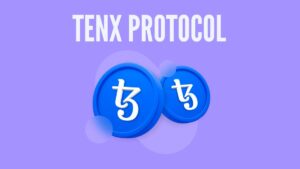TL;DR
- Significant TVL Drop: Blast Network’s Total Value Locked (TVL) plummeted by 62% from its peak, following a $300 million liquidity loss in early August, dropping to $785 million by August 5.
- Decline in Daily Users: Daily active users fell to 27,800 by August 18, the lowest since February, contrasting sharply with competitors like Base and Arbitrum, which have 740,000 and 360,000 daily active wallets, respectively.
- Community and Launch Issues: Problems with a June airdrop and lack of community engagement have led to dissatisfaction among users and developers, with prominent projects like Pacmoon seeking alternatives.
Recently, Blast Network has faced significant challenges, with its TVL plummeting by an alarming 62% from its peak, according to DefiLlama. This decline follows a substantial $300 million liquidity loss reported in early August. The network’s TVL dropped from $1.1 billion to $785 million by August 5, marking its lowest level in six months.
Although Blast has managed to recover over $100 million in TVL within two weeks, it still struggles to attract liquidity, remaining down over 60% from its record high of $2.3 billion set in early June.
Blast Network’s Decline in Daily Active Users
The challenges facing the network are highlighted by a significant decline in daily active users. By August 18, the count had plummeted to 27,800, marking the lowest point since Blast initiated its expansion in late February.
This sharply contrasts with rivals such as Base and Arbitrum, which have impressive figures of 740,000 and 360,000 daily active wallets, respectively. In mid-June, Blast-based decentralized applications (dapps) saw more than 180,000 daily wallet users, underscoring a significant drop in user engagement.
Issues with Airdrop and Community Engagement

The decline in user numbers follows a problematic airdrop in June and growing dissatisfaction among users and developers. Notable initiatives like Pacmoon, the leading memecoin on Blast’s network, are now exploring other options.
Pacmoon’s Lamboland has taken a stand against Blast, pointing out its shortcomings in community involvement and cultural connection, stating, “Blast failed to address these crucial aspects and built a system that focused on token creation without providing necessary social support.”
Criticism Over Launch Approach
Additionally, the network has come under fire for its launch strategy, particularly regarding the bridge feature that prevented users from accessing their funds for an extended time. This situation has only intensified the mounting frustration felt by both the community and developers.
The dramatic decline of Blast’s key metrics demonstrates that decentralized finance (DeFi) projects and public decentralized networks should pay more attention to securing organic growth and focusing on their communities and use cases.
The ecosystem experienced a swift expansion fueled by the eagerly awaited airdrop. Yet, when the giveaway kicked off in June, responses varied, as numerous users expressed dissatisfaction with the token-claiming procedure and how the tokens were distributed.
Not only were airdrop participants unhappy with the network’s approach, but some projects building on Blast were also frustrated. For instance, Pacmoon, previously the leading meme coin on layer 2, is making the move to Solana.
According to Pacmoon’s Lamboland on X, “We think that tokens, community, and culture are what make a blockchain successful. However, Blast never focused on that. They created a system where native tokens on Blast are actively disincentivized and they provided zero social support.”










